#budjak
Text

I'm afraid I've gotten stuck doing stuff in this style.
7 notes
·
View notes
Link
the bombing campaign has done little to help win Putin's war [in Ukraine], exposing key lessons about the future of warfare.
Two bridges tell the story: one in North Vietnam 50 years ago and one from last week, in the Ukrainian beach resort of Zatoka on the Black Sea coast.
#Dniester River#Black Sea#Coast#crossing#war#SAMs#Budjak#Zakota#Odesa#ports#spans#Dniester Estuary#cruise missiles#rail connections#roads#Ukraine crisis 2022.
1 note
·
View note
Note
'previously unknown country' you mean ukraine?????
(the national animal map post)
I know it's actually part of Ukraine, it's just that the way the bear is standing plus the existing borders make it look like there's another border there, and my poor sleep deprived brain was like "hey that looks like it's a separate country" followed closely by "lol conglomerate rock" (on reflection I think it's a log)
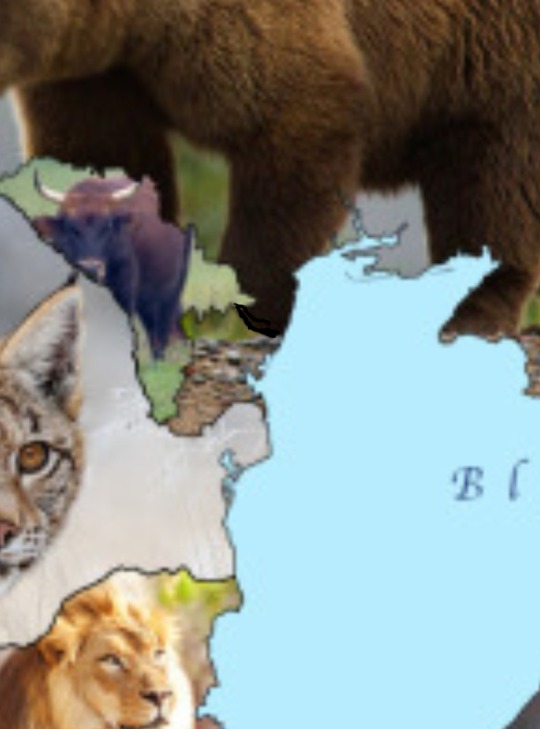
(I drew it in but you can't really see it)
(also pretty sure I saw that aurochs on the road the other day, people around here need to stop overstocking they farms and fix they fences)
Bonus "fact", the national animal of Corsica is a blurry cat and that of Sardinia is the sky, vezi

Also it turns out the national animal of Wales is in fact the dragon so I feel pretty vindicated about that, sorry Wales for doubting you <3
#asks answered#am i going to be in trouble for not recognising the budjak region#is there a separatist movement#is there discourse#if i open my inbox later to find budjak separatist discourse i will only be a little surprised#and only because i am not very important#anyway maps are cool
0 notes
Photo
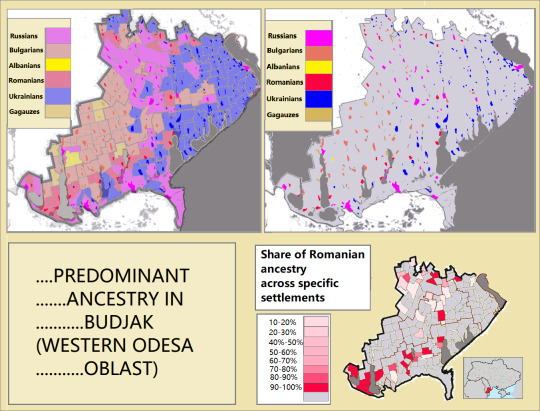
Predominant ancestry in Budjak, Western Odesa Oblast, Ukraine.
37 notes
·
View notes
Text
🌍 Mapping 13 Countries Inside Ukraine 🇺🇦: A Fascinating Thought Experiment! 🌍
Ever wondered how big Ukraine really is? Let's play a game of geopolitical Tetris! 🎮
📍 Countries Inside Ukraine's Borders 📍
🇦🇱 Albania finds its place in the Northwest, specifically in Volhynia.
Historical Note: Like Ukraine, Albania also struggled for its independence and faced various invasions.
2. 🇨🇿 Czechia snugly fits in the West, in the regions of Galicia-Podolia.
Did You Know?: Both the Czech Republic and Ukraine are Slavic countries with historical ties that span over a thousand years. They have shared moments of solidarity, especially during the Velvet Revolution and Ukraine's own struggle for democracy. The Czech civil society has often been supportive of Ukraine's European aspirations, and both nations have a rich folklore tradition.
3. 🇸🇮 Slovenia nestles in the Southwest, in Transcarpathia.
Cultural Insight: Slovenia and Ukraine share a love for mountainous landscapes.
4. 🇦🇹 Austria takes its spot in the North, covering areas like Polesia, Kyiv, and Siveria.
Historical Insight: the Austrian Empire once controlled the region of Galicia, which is now part of modern-day Ukraine. The Austrian rule has left a lasting impact on the culture and architecture of the region.
5. 🇸🇰 Slovakia finds its home right in the Center of Ukraine.
Historical Ties: Slovakia and Ukraine share a border and have a complex history of interaction.
6. 🇷🇸 Serbia is located in the Black Sea Coast and Zaporizhzhia region.
Conflict Legacy and External Influence: Both countries have recent histories of conflict and are still dealing with its aftermath. Russia often leverages shared historical narratives to influence Serbian politics, further complicating Serbia's geopolitical stance.
7. 🇲🇪 Montenegro fits into Southern Bessarabia/Budjak.
Tourism Angle: Montenegro is a tourism gem, something Ukraine is aspiring to become.
8-9. 🇨🇾 Cyprus and 🇹🇷 Northern Cyprus share the southern part of Kherson region.
Political Intrigue: The division of Cyprus into two entities echoes Ukraine's own territorial issues.
10. 🇭🇺 Hungary is situated in the East, covering Poltava region and Sloboda Ukraine.
Historical and Current Ties: Hungary ruled over Transcarpathia for centuries, a region primarily inhabited by Ukrainians. During its rule, Hungary implemented policies aimed at assimilating the local population. Even today, Hungarian politicians occasionally make territorial claims against Ukraine and other neighboring countries.
11-12. 🇮🇱 Israel and 🇵🇸 Palestine are located in the Azov Sea region.
Historical Trauma: Prior to World War II, Ukraine had one of the largest Jewish populations in the world. In many cities, Jews made up between 20% to 50% of the population. Tragically, most were exterminated by German Nazis during the Holocaust, with estimates suggesting that around 1.5 million Ukrainian Jews were killed.
13. 🇦🇲 Armenia finds its place in Crimea.
Historical Trauma: Both Ukraine and Armenia have faced historical tragedies, including genocides and wars.
📊 By the Numbers 📊
Total Area: 511,000 km² (That's 92,000 km² less than Ukraine! Enough room left for Switzerland and Denmark 🇨🇭🇩🇰)
Population: 66.1 million (That's 42% more than Ukraine! 🤯)
Wealth: Only Austria 🇦🇹 and Israel 🇮🇱 are considered wealthy. The rest range from average to poor.
GDP: A staggering $1.9 trillion (nominal) and $2.8 trillion (PPP), which is 9 times Ukraine's GDP pre-Russian invasion. 💰
🤔 What Does This All Mean? 🤔
All these countries have faced historical challenges similar to Ukraine, especially the scars left by the World Wars. Yet, their paths have diverged significantly, leading to different economic and social outcomes.
💬 Your Thoughts? 💬
What do you think led to such drastic differences? Share your thoughts, theories, or even personal stories related to these countries.
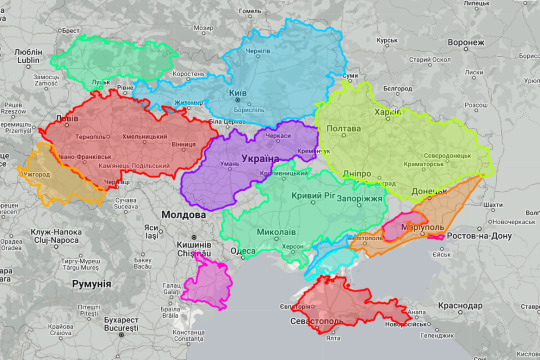
3 notes
·
View notes
Text
Mission suicide

Le soleil qui s’élevait au-dessus de la forêt de Retz fut soudain caché par quelques nuages débonnaires et floconneux venus du Nord. Ce fut comme un signal dans la tête d’Andreï. Il tapa un coup sur la carlingue pour dire à Igor de stopper. Le reste du convoi –cinq véhicules en tout- s’arrêta derrière lui.
Il se tenait debout à l’avant et à gauche du blindé, son corps, à partir de la taille, sortant du trou prévu à cet effet. Il portait le même casque que ses hommes, orné de l’aigle moldave tricolore. Sa moustache épaisse et rousse lui faisait comme des vibrisses agitées par le vent. Devant lui, en contrebas, une sorte d’auvent, tout aussi métallique que le reste, entourait une autre ouverture, comme une meurtrière horizontale, qui permettait à Igor, le chauffeur, de voir ce qu’il y avait devant lui. A sa droite, placée un peu plus haut, une autre ouverture permettait à un troisième homme de grimper jusqu’à la mitrailleuse lourde et de l’actionner.
Une paire de jumelles pendait à son cou. Il s’en saisit et scruta lentement les alentours. Puis il sauta à pieds joints sur le bitume. La douleur qu’il ressentit dans ses pieds et le long de sa colonne vertébrale le fit s’en repentir immédiatement. Il avait momentanément oublié qu’il venait de rouler tente heures de suite. Il réussit néanmoins à se redresser comme si de rien n’était et fit signe de descendre à Patras, le sergent, dont le tronc sortait de la même manière du blindé qui fermait la marche.
Andreï commandait depuis deux ans ce groupe d’intervention rapide constitué en tout et pour tout de vingt-six hommes. A trois heures du matin, dans leur caserne de Sorocka, ils avaient été réveillés par le capitaine, avec ordre de se rendre en Allemagne. Celui-ci n’avait pu lui communiquer autre information. Il y avait normalement six hommes par véhicule, mais l’un deux fut délesté de quatre de ses occupants habituels pour être bourré en catastrophe de jerricans d’essence.
Ils avaient traversé la Roumanie, la Hongrie, la Slovaquie et la République Tchèque. Le trajet qui les menait jusqu’en Allemagne leur avait été fourni à l’avance. A la frontière de chacun de ces pays, des barrages militaires les attendaient. Ils n’eurent pas besoin de parlementer, ni de présenter quelque papier que ce soit, ni même de descendre de leur véhicule. Les barrages s’ouvrirent puis se refermèrent derrière eux, comme la gueule d’un gigantesque monstre. A chaque fois, les soldats leur adressèrent un salut amical, sauf à la frontière allemande, où les Tchèques se contentèrent de les regarder d’une façon qui fit glacer le sang d’Andreï. Une fois cette dernière étape franchie, Andreï avait appelé la base par radio pour connaître enfin la nature de sa mission. Ce ne fut pas le capitaine qui lui répondit, ni aucun des gradés qu’il connaissait, mais quelqu’un qui se présenta comme le colonel Miterev, des forces spéciales, directement rattaché à l’Etat-major de Chisinau. Les nouvelles instructions étaient de pousser jusqu’en France, dans le département de l’Oise, au nord de Paris, et d’attendre de nouvelles instructions.
Ils traversèrent l’Allemagne de nuit. Ils ne virent pas âme qui vive, du début à la fin. Ni militaires ni civils. Pas une seule voiture ne les dépassa ou ne les croisa. Aucune lumière, aucun signe de vie.
Dix ans auparavant, la Russie avait annexé l’Ukraine et placé la Pologne irrédentiste sous blocus. La Biélorussie avait sauvé son indépendance formelle, mais dans les faits était redevenue une annexe de Moscou. La Bulgarie, la Moldavie, la Serbie, dont les dirigeants étaient alors pro-russes, avaient été incorporées, plus ou moins de gré, plus ou moins de force, dans une union militaire « russo-balkanique » nouvellement créée. Quant aux pays d’Europe centrale, qu’ils venaient de traverser, ils restaient eux aussi à peu près indépendants, tant que leur politique étrangère correspondait aux intérêts des russes.
En échange de sa soumission, la Moldavie avait récupéré le Budjak, ancienne province perdue à la fin du Moyen-âge. Cela lui assurait de nouveau un accès à la Mer noire.
Peu après, sans explication, Moscou avait décidé de mettre fin, radicalement, à toute relation avec l’Europe de l’Ouest et les Etats-unis. Toutes les relations commerciales s’arrêtèrent. Les autres membres de l’union russo-balkanique durent faire de même. Toutes les communications furent coupées.
Depuis dix ans, plus personne ne savait ce qui se passait là-bas, en France, en Allemagne, en Italie, en Scandinavie. Quelques rumeurs bruissaient, par l’intermédiaire des Hongrois et des autres, mais elles étaient délirantes.
Patras descendit, beaucoup plus prudemment, et ses rangers résonnèrent lourdement sur le bitume.
12 notes
·
View notes
Photo
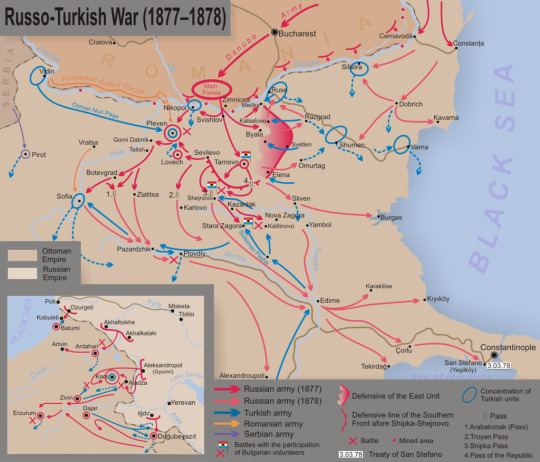
The Russo-Turkish War of 1877–1878 (Turkish: 93 Harbi, lit. 'War of ’93', named for the year 1293 in the Islamic calendar; Russian: Русско-турецкая война, romanized: Russko-turetskaya voyna, "Russian–Turkish war") was a conflict between the Ottoman Empire and a coalition led by the Russian Empire, and including Bulgaria, Romania, Serbia, and Montenegro.[21] Fought in the Balkans and in the Caucasus, it originated in emerging 19th century Balkan nationalism. Additional factors included the Russian goals of recovering territorial losses endured during the Crimean War of 1853–56, re-establishing itself in the Black Sea and supporting the political movement attempting to free Balkan nations from the Ottoman Empire.
The Russian-led coalition won the war, pushing the Ottomans back all the way to the gates of Constantinople, leading to the intervention of the western European great powers. As a result, Russia succeeded in claiming provinces in the Caucasus, namely Kars and Batum, and also annexed the Budjak region. The principalities of Romania, Serbia, and Montenegro, each of which had had de facto sovereignty for some years, formally proclaimed independence from the Ottoman Empire. After almost five centuries of Ottoman domination (1396–1878), the Principality of Bulgaria emerged as an autonomous Bulgarian state with support and military intervention from Russia.
https://en.wikipedia.org/wiki/Russo-Turkish_War_(1877%E2%80%931878)
0 notes
Photo

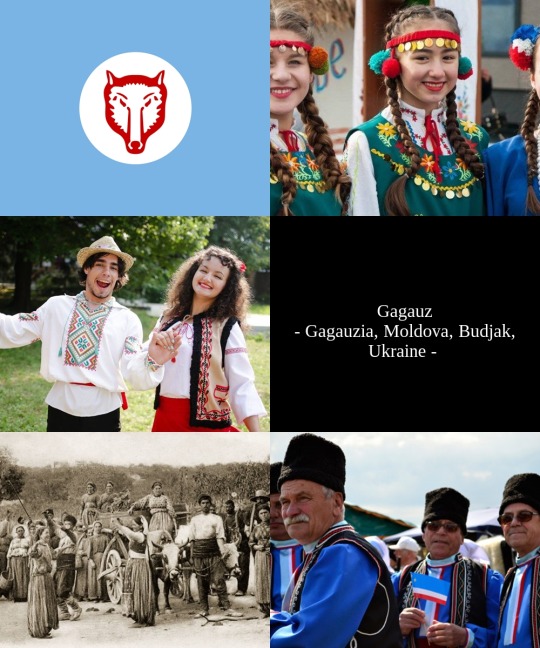



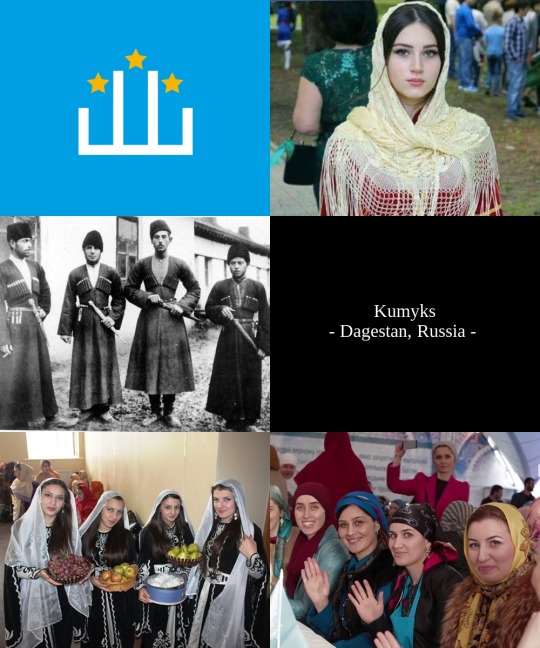
Aesthetic of the ethnies of the world ! Turkic ethnies part 1 !
The Azerbaijanis or Azeris are a Turkic people inhabitants of the country of Azerbaijan and of regions of Iran. They speak azerbaijani. They are Shia muslim. There are around 30 to 35 of them worldwide, with around 15 millions of them in Iran, 10 millions in Azerbaijan and 1 million in Russia.
The Gagauz are a Turkic people inhabitants of the region of Gagauzia in Moldova and of Budjak in Ukraine. They speak gagauz, but mainly the langage of the country they are in. They are Eastern Orthodox. There are around 300 000 of them, with 100 000 in Moldova, and 30 000 in Ukraine.
The Karachays are a Turkic people inhabitants of the region of Karachay-Cherkessia officially in Russia. They speak karachay and russian. They are Sunni muslim. There are around 225 000 of them.
The Chuvash are a Turkic people inhabitants of the region of the Republic of Chuvashia officially in Russia. They speak chuvash and russian. They are mainly irreligious and christian Orthodox. There are around 1.5 millions of them.
The Balkars are a Turkic people inhabitants of the region of Kabardino-Balkaria officially in Russia. They speak karachay-balkar and russian. They are Sunni muslim and Muwahhid muslim. There are around 130 000 of them.
The Kumyks are a Turkic people inhabitants of the region of the Kumyk Plateau in Dagestan, officially in Russia. They speak kumyk and russian. They are Sunni muslim. There are around 505 000 of them.
Those aesthetics are part of a serie. I’m covering the biggest ethnies of the world, starting by Europe. We are now covering Asian and European ethnies.
#turkic#Ethnies of the world#azerbaijan#azeri#azerbaijani#gagauz#karachay#gagauzia#karachay-cherkessia#russia#chuvash#chuvashia#balkars#kabardino-balkaria#kumyks#kumyk#dagestan#aesthetic#geography#ethnology#ethnies#world
15 notes
·
View notes
Photo

Bairamcea has a new flag!
from /r/vexillology
Top comment: Bairamcea is a fictional country located in the historical Budjak region of modern day Ukraine. It is a country of with a Slavic, Turkish blended cultural history. To learn more please visit my nationstates page. https://www.nationstates.net/nation=bairamcea/detail=factbook/id=1322514
6 notes
·
View notes
Text
youtube
Phổ biến kiến thức phổ thông thôi chứ chả có gì để tán nhảm đâu :)))
***
Trong Linux, mọi thứ là tệp và mọi thứ là đối tượng trong Windows :D
À há. ReactOS 64bit hiện tại chỉ để cho vui nên hỗ trợ UEFI chưa cần thiết lắm. Còn để dùng tên Firefox thì phải có sự đồng ý từ Mozilla :))
*Mấy hôm nay bận quá nên chỉ liếc qua được tí ti thôi! Chán ghê :((*
***
Tại sao tới tận bây giờ Nga mới bắt đầu tấn công lớn vào Odessa???
*Ngáp* *Cho bạn nào yêu thích lịch sử Đông Âu* Phần phía Tây biển Đen của tỉnh Odessa (Đến giờ mà vịnh này còn chưa có tên riêng!) là vùng Budjak hay Budzhak (tiếng Bulgari, Russia và Ukraina: Буджак; Romani: Bugeac; Gagauz và Turkish: Bucak). Đây đã luôn là một khối thống nhất với khu vực Moldova ngày nay với tên chung tiếng Anh là Bessarabia cho đến cuối năm 1940. Năm 1941, Stalin đã ra một quyết định khó hiểu là cắt phần này cho Ukraina trong khi vẫn lập Moldova như một chủ thể cấu thành Liên Xô. Khó hiểu là vì nó mẫu thuẫn với chính định nghĩa nation nhưng lại dễ hiểu nếu xét theo cơ cấu dân số khi cư dân chủ yếu ở đây lúc này lại là những người không biết tiếng Moldova. Tuy nhiên, đây hoàn toàn có thể là cơ sở để đất nước phía bắc phát động chiến tranh để "lấy lại đất tổ, không làm khổ dân" hay "mở đường cho phát triển kinh tế biển" khi 'chủ nghĩa dân tộc' là một lý do khiến Moldova rời bỏ Liên Xô. Đây cũng có thể là điều kiện để nước này cho phép Transnistria gia nhập nước mới ở phía tây Nga :))
***
Risk appetite (khẩu vị rủi ro) là thuật ngữ chỉ mức độ rủi ro mà một chủ thể sẵn sàng chấp nhận để có thể theo đuổi các mục tiêu của mình trước khi thực hiện các hành động cần thiết nhằm giảm thiểu các tác động của rủi ro. Khẩu vị rủi ro thể hiện sự cân bằng giữa lợi ích tiềm năng của sự đổi mới và các mối đe dọa mà sự thay đổi chắc chắn sẽ mang lại. Nói khác đi, khẩu vị rủi ro chính là quan điểm, mức chấp nhận sự thay đổi do rủi ro gây ra trong quá trình đầu tư của mỗi người. Bởi những khoản đầu tư mang lại lợi nhuận cao sẽ đi cùng với tính chất rủi ro lớn và ngược lại việc an toàn, bền vững thì lợi nhuận đạt được sẽ thấp hơn, diễn nôm ra là liều ăn nhiều. Và dễ dàng thấy rằng, việc bỏ công vào nông nghiệp hiện tại thì rủi ro hết sức cao :))))
0 notes
Photo
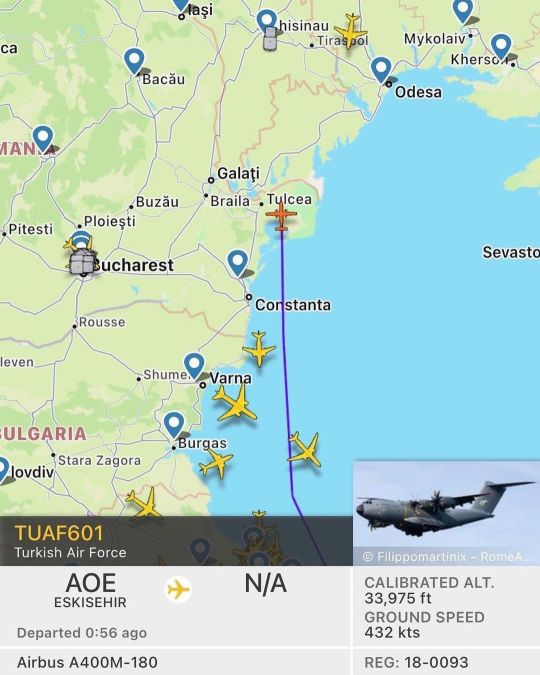
Bu gecə ərzində Türkiyədən qalxan və Ukrayna hava sahəsinə girən növbəti hərbi təyyarəni görürsünüz. Bir gecədə, Eskişəhirdən qalxan 2 türk hərbi yük təyyarəsi Ukraynaya eniş edib. 1-ci təyyarənin ucuş və eniş arealı Kiyev tərəf idisə, ikinci təyyarə xəritədə göründüyü kimi, Odessa əyalətinin Budjak hava limanına eniş etdiyini təxmin etməy olar. https://www.instagram.com/p/CaW4QMjjkM5/?utm_medium=tumblr
0 notes
Photo

The Albanians in Ukraine (also known as Albantsi, Ukrainian: Албанці) are an ethnic minority group located mainly in Zaporizhia Oblast and Budjak. They descend from Albanian warriors who fought against the Ottoman Empire in the Russo-Turkish wars and were allowed to settle in the Russian Empire in the 18th century. The historical community of Albanians in Ukraine call themselves ga tantë (from ours) and they speak a language si neve (like us). Their ancestors came to Ukraine in the 18th and 19th centuries. Yet, they trace their ancestry to tosk Albanians who in the 16th century settled in the eastern Bulgaria (Despotate of Dobruja) along with Gagauz people. The arrival of the Albanians was connected to the Russo-Turkish War of 1768-1774. During this war some Orthodox Christian Albanians revolted against the power of the Ottoman Empire. After their rebellion initially failed many joined up with the Russian fleet which was on its Aegean Expedition. At the end of the war about 1,700 Albanian fighters and family members went to the Russian Empire. In 1811 Albanians established their own settlement of Karakurt in Budzhak near the Bolhrad city. After the Albanians in Odessa there are two streets Great Arnaut Street and Little Arnaut Street. Due to defeat of Russia in the Crimean War, many Albanians moved to the east Ukraine in 1861 and resettled there. It was not until the 20th century that the Albanians of Ukraine realized that they were Albanians. At some point of time in Odessa existed the Albanian cultural center "Rilindja" (Renaissance).
requested by @habjusthab
67 notes
·
View notes
Text
I was hoping for budjak separatist discourse for my birthday but instead I just got hardcore pornografia
0 notes
Text
A Black day for a Black Sea
In meetings with George Seymour, British ambassador to Russia, on the Sikh Empire and its ongoing conflicts with the British India Company possibly upsetting the Buffer Agreement of November 1842, Tsar Nicholas II tells Seymour that while he is not looking to expand Imperial Russia he feels compelled to protect the Orthodox Christians who live in the Ottoman Empire. For Russia’ continued participation the agreement, as well as Russia’s past influence on the European continent, he requires their support. When conflict finally breaks out as the Russian and Ottoman Empires declare war on each other, Britain and Austria convene a new Vienna Congress to which the Ottomans are invited and present terms of agreement for the two. Nicholas II agrees, but Sultan Abdülmecid rejects them outright. Prussia backs Russia’s position but still helps Britain craft new terms though the Russians and Ottomans simply cannot agree on the same ones. When the talks fail, France demands that Russia withdraw from Wallachia and Moldavia. Austria, with its Slavic and Roumanian minorities is nervous about Russian designs in the Balkans and how that would affect its fragile stability, allies with France and the Ottomans.
When Russia ignores the ultimatum, France and Austria both declare war on Russia. Britain, in spite of its relationship with Russia in Asia, does not really want to see the Russian Navy gain access to the Mediterranean Sea so is forced to stay neutral in the Euxine War. Prussia, believing that the rejection of the amendments does not justify abandoning the diplomatic process and works with Britain in what comes to be called "telegraph diplomacy" to try and resolve the conflict. As French and Ottoman ships and troops invade the Crimean peninsula and lay siege to the port of Sevastopol and under pressure from the Austrian army, Russia withdraws from the Danubian principalities in order to defend its Black Sea assets. The Austrian army follows the retreating Russians and occupies Bessarabia and Budjak. Austria’s army, after reforms along the French lines since Radetzky’s success at putting down the Hungarian revolution, does well against a Russian army superior in numbers but lacking in training and logistical ability. This forces Russia to split its attention, enhancing its weaknesses in both theatres of combat. The Euxine War, while helping to place the French Empire in a preeminent position on the continent, merely papers over Austria’s own instability for the time being.
When the Treaty of Paris is signed in May of 1856 to end the Euxine War, Russia is forced to cede Bessarabia and Budjak to the Ottoman Empire. Bessarabia (with Budjak), Moldavia and Wallachia are placed under the supervision of the Great Powers though nominally they remain part of the Ottoman Empire as the Danubian Principalities. While Russia’s merchant ships are allowed passage through the straits, the Black Sea is demilitarised.
0 notes